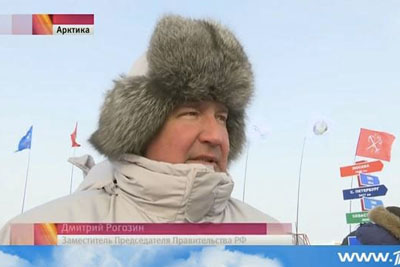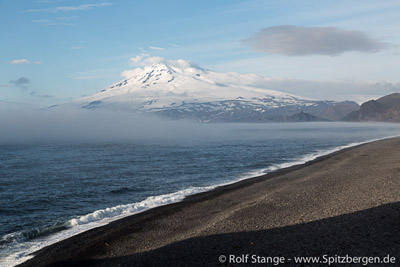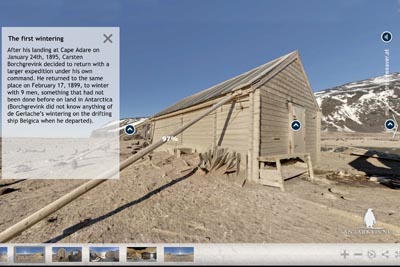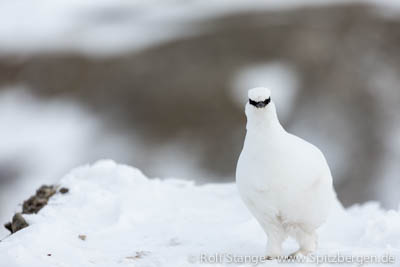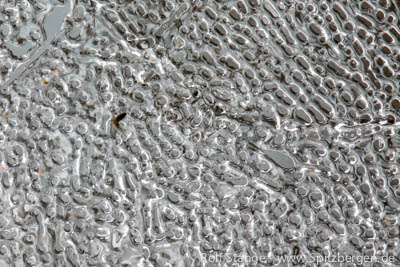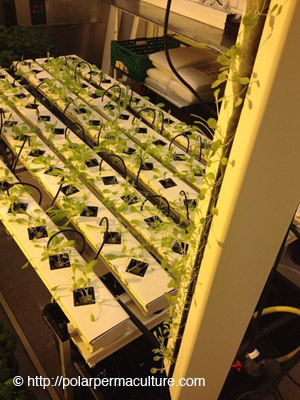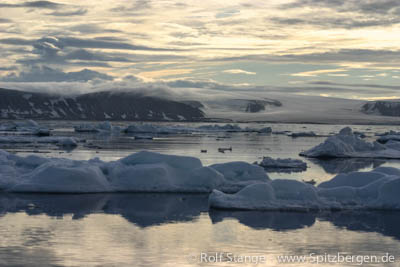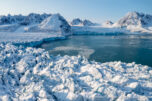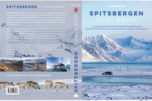-
current
recommendations- Liefdefjord
New page dedicated to one of Spitsbergen's most beautiful fjords. Background information and many photos.
- New Spitsbergen guidebook
The new edition of my Spitsbergen guidebook is out and available now!
- Liefdefjord
New page dedicated to one of Spitsbergen's most beautiful fjords. Background information and many photos.
Page Structure
-
Spitsbergen-News
- Select Month
- May 2025
- April 2025
- March 2025
- February 2025
- January 2025
- December 2024
- November 2024
- October 2024
- September 2024
- August 2024
- July 2024
- June 2024
- May 2024
- April 2024
- March 2024
- February 2024
- January 2024
- December 2023
- November 2023
- October 2023
- September 2023
- August 2023
- July 2023
- June 2023
- May 2023
- April 2023
- March 2023
- February 2023
- January 2023
- December 2022
- November 2022
- October 2022
- September 2022
- August 2022
- July 2022
- June 2022
- May 2022
- April 2022
- March 2022
- February 2022
- January 2022
- December 2021
- November 2021
- October 2021
- September 2021
- August 2021
- July 2021
- June 2021
- May 2021
- April 2021
- March 2021
- February 2021
- January 2021
- December 2020
- November 2020
- October 2020
- September 2020
- August 2020
- July 2020
- June 2020
- May 2020
- April 2020
- March 2020
- February 2020
- January 2020
- December 2019
- November 2019
- October 2019
- September 2019
- August 2019
- July 2019
- June 2019
- May 2019
- April 2019
- March 2019
- February 2019
- January 2019
- December 2018
- November 2018
- October 2018
- September 2018
- August 2018
- July 2018
- June 2018
- May 2018
- April 2018
- March 2018
- February 2018
- January 2018
- December 2017
- November 2017
- October 2017
- September 2017
- August 2017
- July 2017
- June 2017
- May 2017
- April 2017
- March 2017
- February 2017
- January 2017
- December 2016
- November 2016
- October 2016
- September 2016
- August 2016
- July 2016
- June 2016
- May 2016
- April 2016
- March 2016
- February 2016
- January 2016
- December 2015
- November 2015
- October 2015
- September 2015
- August 2015
- July 2015
- June 2015
- May 2015
- April 2015
- March 2015
- February 2015
- January 2015
- December 2014
- November 2014
- October 2014
- September 2014
- August 2014
- July 2014
- June 2014
- May 2014
- April 2014
- March 2014
- February 2014
- January 2014
- December 2013
- November 2013
- October 2013
- September 2013
- August 2013
- July 2013
- June 2013
- May 2013
- April 2013
- March 2013
- February 2013
- January 2013
- December 2012
- November 2012
- October 2012
- September 2012
- August 2012
- July 2012
- June 2012
- May 2012
- April 2012
- March 2012
- February 2012
- January 2012
- December 2011
- November 2011
- October 2011
- September 2011
- August 2011
- May 2011
- April 2011
- March 2011
- February 2011
- January 2011
- December 2010
- November 2010
- September 2010
- August 2010
- July 2010
- June 2010
- May 2010
- April 2010
- March 2010
- February 2010
- November 2009
- October 2009
- August 2009
- July 2009
- June 2009
- May 2009
- April 2009
- March 2009
- February 2009
- January 2009
- December 2008
- November 2008
- October 2008
- August 2008
- July 2008
- June 2008
- May 2008
- April 2008
- March 2008
- February 2008
- April 2000
- Select Month
-
weather information
-
Newsletter

| Guidebook: Spitsbergen-Svalbard |
Home → April, 2015
Monthly Archives: April 2015 − News
Russian Vice premier Rogozin in Spitsbergen
The sudden surfacing of the powerful Russian politician Dmitry Rogozin, vice premier and leader of the Russian government’s new Arctic Commission, stirred Norwegian officials up. Rogozin is on an EU sanction list and not welcome in Norway, as was subsequently made clear by the Norwegian government.
Rogozin provoked the Norwegian government by mentioning that the Norwegian sovereignty is limited in Svalbard (the Spitsbergen Treaty makes undisputably clear that Norway has full sovereignty over the Spitsbergen archipelago, but it does indeed put some limits to the execution of the sovereignty). According to Rogozin, nobody could be kept from visiting Svalbard.
It is not known how Rogozin, who made his arrival known via twitter, arrived at the airport at Longyearbyen, but it is safe to assume that he did not travel trough mainland Norway. Rogozin soon continued to the Russian drift ice station Barneo near the north pole, where he made further provocative comments in an interview to Russian state TV: “Last year, we had the historical reunification of Sevastopol and the Crimea. This year, we present a new view and new powerful stress on the development of the Arctic. Basically, its is all about the same …” and he continued: Russia is now “starting to get more conscious about territory, its interests and borders”. Russia is known as nationalist and expansionist.
Norway’s foreign minister Børge Brende did not leave any doubts that “people on the sanctions list, people that have been central in breaching international law in Ukraine, are not welcome to the mainland or to Svalbard”.
It is, however, unlikely that this will make of an impression on the Russian vice premier.
Russian vice premier Dmitriy Rogozin at the Russian drift ice station Barneo near the north pole (twitter photo)..
Source: Barentsobserver
Arctic voyages 2015: Jan Mayen, Spitsbergen
Two tickets have become available again on the expedition to Jan Mayen 2015 (15th-27th June) due to a cancellation. Demand is high, the Jan Mayen expedition in 2016 is already fully booked.
In June 2015 we are sailing to Jan Mayen …
There is also still the opportunity to join us on the voyage in Spitsbergen (15th-25th September) 2015 with SV Antigua, with focusses on glacier hikes and photography, next to the “more usual” landings and walk, which we will certainly also do. This voyage will be German speaking.
… and in September 2015 with SV Antigua to Spitsbergen’s glaciers.
Antarctic panorama: Cape Adare
There is a new panorama tour (virtual tour) from Antarctica, namely from Cape Adare in the Ross Sea. Cape Adare is one of the most famous, but rarely visited places in Antarctica: in 1895, it was the site of the first well-documented landing on the continent, and in 1899 it was the site of the very first wintering on the continent, by an expedition led by Karsten Borchgrevink. These stories are shortly summarized in the new panorama tour, and so is the visit of the northern party under Campbell during Robert F. Scott’s final expedition with Terra Nova.
The panorama tour documents the historic huts at Cape Adare and gives impressions of the amazing scenery of the place at the northernmost end of Victoria Land, being part of the famous Transantarctic Mountains. Cape Adare is also home to the largest colony of Adélie penguins in Antarctica, which means in the world.
In early February, I was lucky to spend a rare good weather day at Cape Adare. On this occasion, I shot the panoramas which are now assembled to this new panorama / virtual tour (click here to get to the tour). Enjoy a virtual trip to Cape Adare!
Virtual tour of Cape Adare, site of the first landing and wintering in Antarctica and home to the largest colony of Adélie penguins.
The arctic blog continued
The arctic blog is now continued! Since mid March, I am back in Spitsbergen and frequently out on tour. Camera, an open eye and eagerness to see and experience arctic scenery, wildlife and history are always with me, and this results in photo galleries and little stories from travels out in the arctic wilderness, published in my arctic blog, which will be continued for most of the year. A trip to Tempelfjord makes the beginning, followed by the event of the year in Spitsbergen, the solar eclipse. Enjoy some virtual high latitude traveling!
Click here for the overview of the blog.
The arctic blog is continued: photos and stories from travels in Spitsbergen, Jan Mayen and Greenland.
Almost doubling of snow mobile accidents
Emergency services and hospital have got a record-high number of missions and patients from snow mobile accidents this year. Until late March, the hospital had 38 patients in treatment with injuries related to accidents from snow mobile driving. In 2014, the equivalent number was 21. Injuries often include fractures.
The data base is not sufficient to analyze reasons, but this season’s instable weather may have contributed with bad visibility at times and icy surfaces.
The proportions of locals and tourists is also not known. Several serious accidents included local drivers, such as the young man who died in an avalanche in January and the extensive search and rescue mission on the east coast. In late March, a young man from Longyearbyen fell into a 6 m deep snow whole with his snow mobile and received heavy head injuries. He is still in hospital in Tromsø, not in a life-threatening condition anymore but he his being kept in an artificial coma.
The numbers of participants on organized tours have not reached the levels of the record years of 2007 and 2008 again, but the numbers of individual snow mobile rentals have increased, indicating a larger number of tourists individually in the field. Those who are out on individual trips with limited experienced and without local knowledge have to remember that they are traveling with a strong vehicle that can quickly reach high speed in terrain that has all the potential traps and dangerous that the winter arctic may have. Uneven terrain, windholes in the snow etc. can be difficult to see in bad weather or poor light conditions, which may quickly result in dangerous accidents.
Enjoyable evening on tour with snow mobiles. But the weather is not always as nice as here.
Source: Svalbardposten (14, 2015)
Spitsbergen-Svalbard.com Easter brainteaser: the mystery solved
The Spitsbergen-Svalbard.com Easter brainteaser – what does the photo at the bottom show? – has got a lot of nice replies. A selection of answers (my own translation of those that were sent in German):
- Close-up of Humpback whale skin
- Close-up of Walrus skin in black & white
- Ice surface. It looks like something has ground it (like the surface at a curling court (Sweden become world champs yesterday!)). So that has to be my guess. Not a curling court, but a ice covered surface that been grounded in some way. Maybe from dog sledge skids?
- Ice structures
- Is it frozen water from below with trapped air bubbles?
- A warm item (e.g. a warm kettle) put on frozen water.
- An aerial photo of frozen mud flats at low tide.
- I thought frozen water at first, but I don’t think that’s right.
- Not polished concrete?
- Iced-over stromatolithes that got a glaciological haircut
- Negative imprint of a fossil fern
- think it is water over some frozen soil or something….
actually i have no clue even after staring for 30 minutes at the picture!
in any case: it is beautiful! 🙂 - A true conch in shallow water?
- Maybe a shoe sole
- A rather rare iron structure on a geode (or part of it)
- Profile of a snow mobile belt
- Close-up of ice structure
- A dog in a river bed / ice surface
A number of interesting and surprisingly varied answers! It seems to have been more difficult than I had thought, and this shows how much camera and lens may help to see things that otherwise are hidden or that we see, if at all, in a different way. All those who have seen glacier ice have had this phenomenon near them (but not necessarily seen it and paid attention to it).
This is how the picture was taken:
What is this? Glacier ice!
A macro photo of glacier ice in an ice cave in a glacier, with tripod and macro lens, to make smallest details visible. The brainteaser photo shows very small air bubbles in glacier ice. The individual bubbles and channels are smaller than 1 mm. The area shown on the photo is, in reality, an estimated 4×6 mm large, or rather: small. This network of air bubbles was oriented in a plain parallel to the very clear ice surface, about 2-3 cm deep in the ice, which altogether made it possible to photograph it. Please don’t ask me how exactly this pattern of air channels comes into existence, I don’t know. Please tell me if you know.
The first price for “Close-up of ice structure” goes to Stephanie in Scotland! Stephanie, the choice is yours!
The second price goes to Leipzig and the third one to Sweden. Congratulations to all winners and a big thanks to all who sent their answers! It was fun, and that was the whole purpose of it.
What is this? Very small bubbles and channels of air trapped in glacier ice
spitsbergen-svalbard.com Easter brainteaser
Update: I haven’t got an answer so far that really hits the nail on the head. The question will remain open and entries can be filed until the answer appears as a new spitsbergen-svalbard.com news entry.
An Easter brainteaser on spitsbergen-svalbard.com? Yes, why not. I took the photo recently here in Spitsbergen. And the first one who can tell me what it shows will receive any item (your choice) of the books, postcards or calendar on this website (see right side or click here). The second and third incoming answers – being correct – have the choice within postcards or calendar. Entries by email (contact).
Not difficult, is it?
The answer has to be correct and concrete. Everything that is not wrong is correct, unless it is wrong. I (Rolf Stange) decide if it is concrete (someone has to do it). It is not enough to write that it is a bit of Spitsbergen. This would be correct, but not concrete.
To make it easier, you can download a larger file of the same photo by clicking here.
Good luck – and happy Easter!
What is this?
Permaculture: vegetables, fresh and tasty from the arctic
Modern life in the arctic is demanding considerable resources. Food stuffs are imported over long distances, which is costly and burns a lot of fuel. Many visitors get a bit nervous when they see the prices for food in the high north, and so-called fresh vegetables are not always as fresh as you might want.
Food waste is shredded and washed straight into the fjord together with waste water, altogether a great waste. Another solution would be highly desirable, both from an environmental and an economic perspective.
Thinking local food in the arctic, most people would probably have reindeer steaks on their mind, which is obviously not the solution. Local vegetables? Negative. Even the Russian (Sovjet, back then) settlements Barentsburg and Pyramiden were, in a way, more advanced, with considerable local production in greenhouses and stables for cows, pigs etc., most of which have been abandoned years ago.
But creative people are working on solutions to grow vegetables locally, fresh and environmentally friendly. A start up project called Polar Permaculture Solutions is developing techniques in Longyearbyen for advanced greenhouses to grow vegetables in permafrost areas without high energy and water consumption. First tests are promising: according to Polar Permafrost Solutions, parsley, coriander, basil, paprika, summer squash, mini corn, onions, lettuce, tomatoes, eggplant, red chili peppers and more have already been grown successfully. Food waste is used to produce soil and fertilizer with biological techniques (sounds better than worms, but that’s what it is)
Fresh, tasty, local production and environmentally friendly – we are looking forward to see the further development!
Fresh vegetables of local production in Longyearbyen: so far an utopia, hopefully soon a reality that makes a lot of sense for the environment and economy.
Source: Polar Permaculture
Lower extent of winter sea ice in the Arctic
During this winter season 2014/2015 the sea ice in the Arctic has extended much less than it usually did.
As the U.S. National Snow and Ice Data Center at the University of Colorado reports, this winter the ice likely reached its maximum extend as soon as February 25th. This is 15 days earlier than the average of the years 1981 to 2010 which serves as the reference period.
More alarming is the fact that the extent of sea ice on this date had not proceeded very far yet. Indeed, since the beginning of the satellite record the maximum extent of Arctic sea ice has never been as low as in this winter. On February 25th the ice covered an area of 14.54 million square kilometers. This is 1.1 million square kilometers less than the long term average and 130.000 square kilometers less than the former negative record of 2011. All areas were affected except for the Labrador Sea and the Davis Strait between Greenland and Canada. There was a remarkably low extent of ice on the Pacific side of the Arctic and in the Barents Sea west of Novaya Semlya and southwest of Spitsbergen.
After reaching its low maximum on February 25th the sea ice extent initially decreased significantly (with regional variations) and then increased again in the second half of March. However, a new maximum could not be reached. Currently the ice is retreating again, according to the time of the year.
It can be expected that the low extent of sea ice in winter will also lead to less ice in the summer season. This scenario is supported by the effect that open water surfaces are absorbing more solar energy and are warming up faster than ice surfaces which reflect most of the sunlight (see also Spitsbergen-Svalbard.com news: Retreat of Arctic sea ice accelerates global warming from February 2014).
Sea ice in northern Spitsbergen.
News-Listing live generated at 2025/May/09 at 16:59:47 Uhr (GMT+1)
